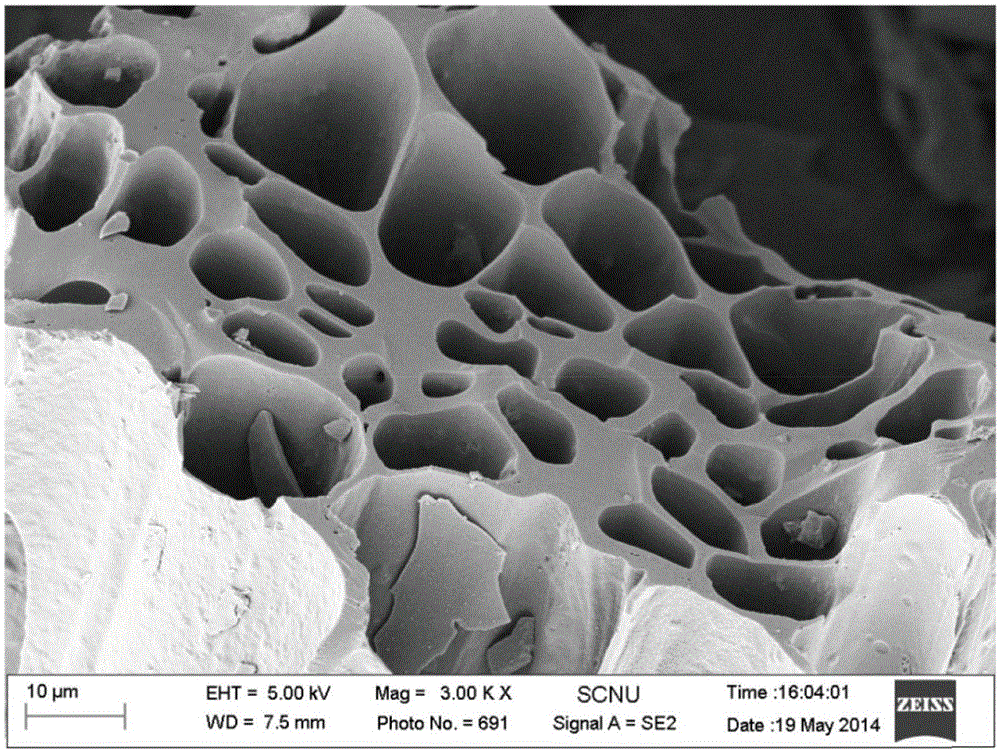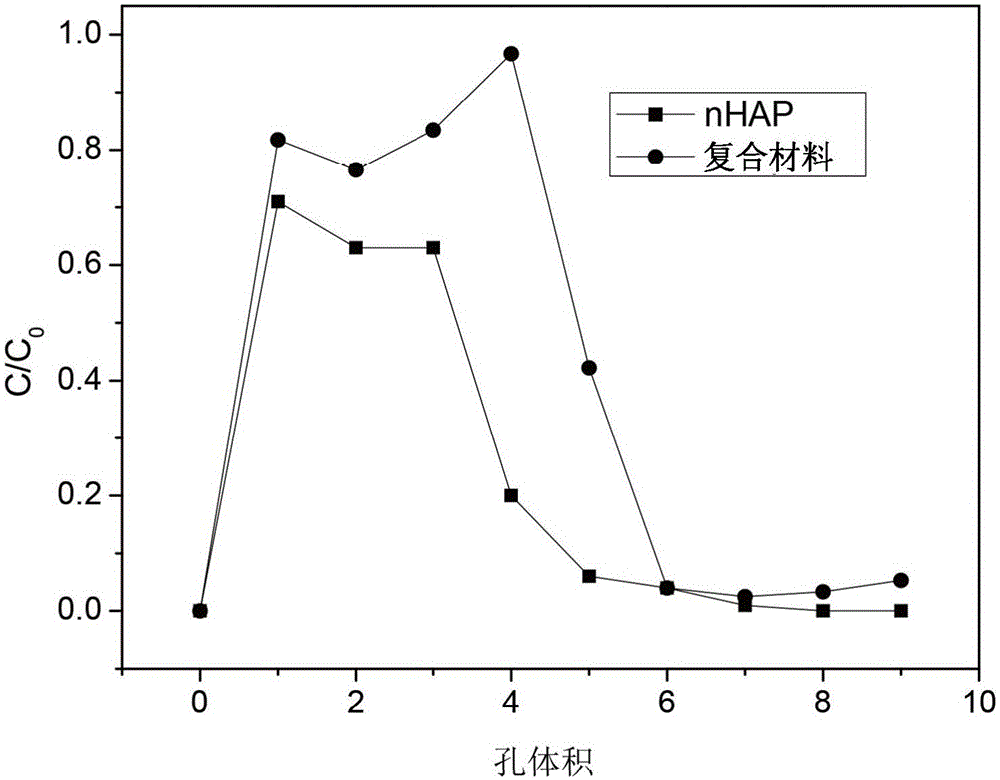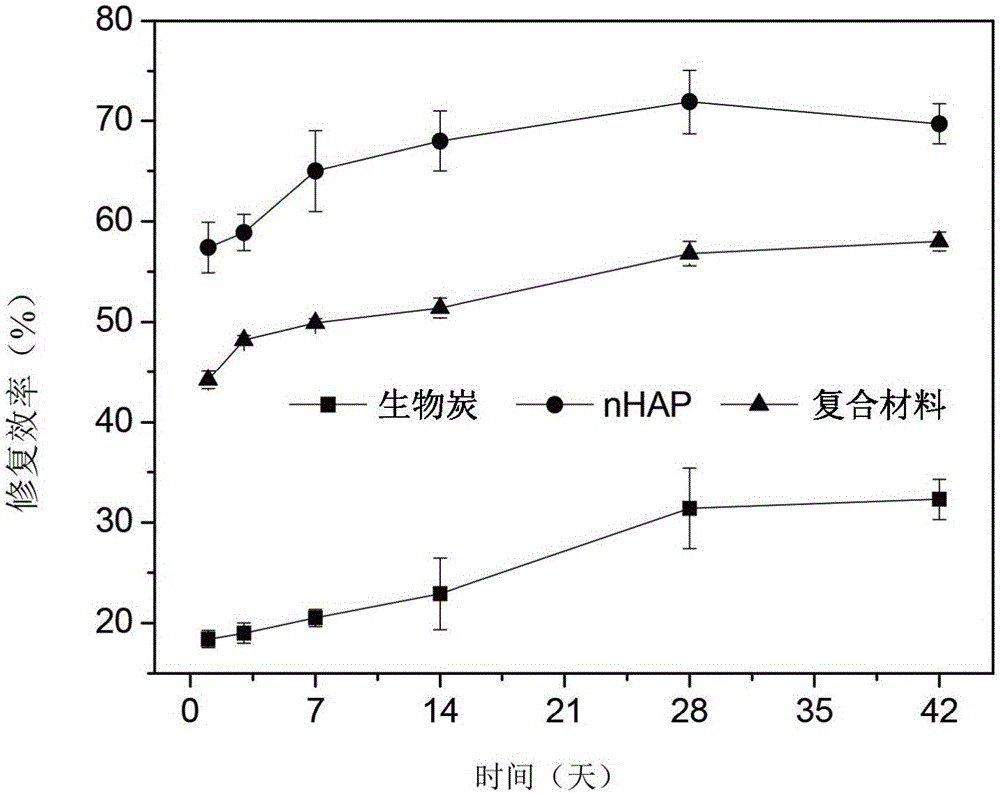Preparation method and application of lead-polluted soil restoration material
A technology for lead-contaminated soil and remediation materials is applied in the field of preparation and application of lead-contaminated soil remediation materials, which can solve the problems of lower soil organic matter content, lower effective lead content, lower bioavailability, etc. High remediation efficiency and the effect of improving soil fertility
- Summary
- Abstract
- Description
- Claims
- Application Information
AI Technical Summary
Problems solved by technology
Method used
Image
Examples
preparation example Construction
[0037] A preparation method of a lead-contaminated soil remediation material, the steps of which are:
[0038] 1) Impregnation: Disperse nano-hydroxyapatite in water, ultrasonicate, add potassium chloride, and then add agricultural waste, stir evenly, separate, and dry;
[0039] 2) Pyrolysis: pyrolyze the dried material in a protective atmosphere to obtain a black solid, which can be ground.
[0040] Preferably, the agricultural waste is bagasse.
[0041] Preferably, the mass ratio of nano-hydroxyapatite, bagasse and potassium chloride is 1:(5-20):(0.01-0.04).
[0042] Preferably, sonicate for 30min-1h.
[0043] Preferably, step 2) is specifically: put the dried material into a crucible, place it in a muffle furnace with a protective atmosphere, raise the temperature to 500-700°C at 15-25°C / min, and continue heating at this temperature Solution for 1~3h, cool down the muffle furnace to room temperature, take out the black solid, and grind it.
[0044] Preferably, the prote...
Embodiment 1
[0056] A method for preparing biochar, comprising the steps of:
[0057] (1) Drying: Shred the collected bagasse and dry it at 105°C.
[0058] (2) Pyrolysis: Put the weighed bagasse into a crucible and place it in a muffle furnace. Under nitrogen, set the final temperature at 500-700°C, and raise the temperature to this temperature at 15-25°C / min After the interval, continue to carbonize for 1~3h. After the muffle furnace cools down to room temperature, take it out, grind it, pass it through a 20-mesh sieve, and keep it sealed. figure 1 SEM image of biochar.
Embodiment 2
[0060] A preparation method of a lead-contaminated soil remediation material is as follows:
[0061] (1) Impregnation: Disperse a certain quality of nano-hydroxyapatite in deionized water, ultrasonicate for 30 minutes, add potassium chloride, then add bagasse, separate after stirring for 0.5-2 hours, and dry at 80°C. The mass ratio of nano-hydroxyapatite, bagasse and potassium chloride is 1:(5~20):(0.01~0.04).
[0062] (2) Pyrolysis: Put the dried material into a crucible and put it in a muffle furnace. Under nitrogen, set the final temperature to 500~700°C, and raise the temperature to this temperature range at 15~25°C / min Afterwards, carbonization was continued for 1~3h to obtain a black solid, which was ground for use.
PUM
 Login to View More
Login to View More Abstract
Description
Claims
Application Information
 Login to View More
Login to View More - Generate Ideas
- Intellectual Property
- Life Sciences
- Materials
- Tech Scout
- Unparalleled Data Quality
- Higher Quality Content
- 60% Fewer Hallucinations
Browse by: Latest US Patents, China's latest patents, Technical Efficacy Thesaurus, Application Domain, Technology Topic, Popular Technical Reports.
© 2025 PatSnap. All rights reserved.Legal|Privacy policy|Modern Slavery Act Transparency Statement|Sitemap|About US| Contact US: help@patsnap.com



